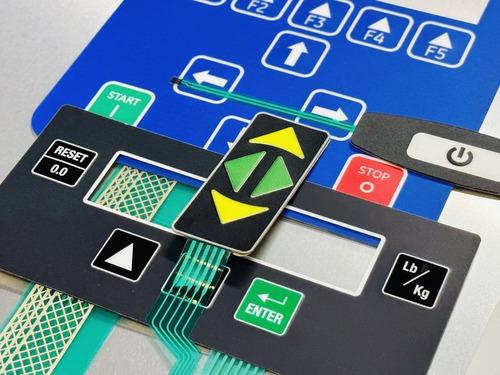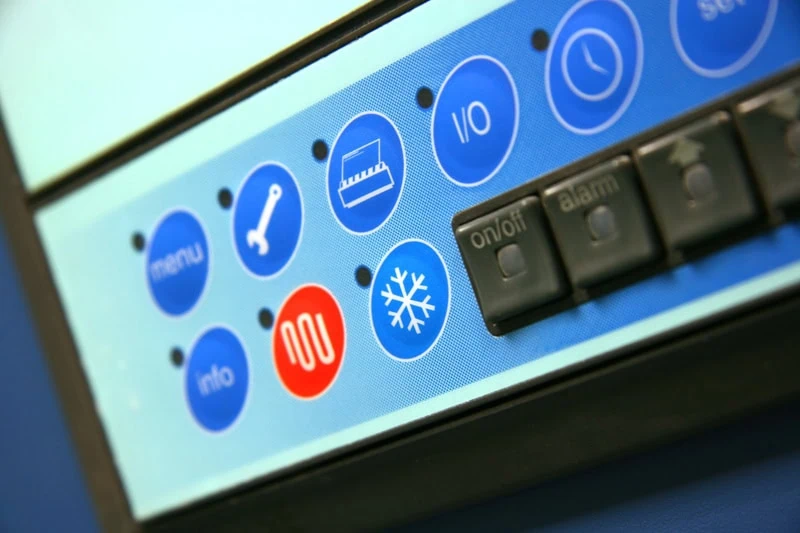Learn Just How Membrane Switches Are Customized to Fulfill Details Layout Requirements
Learn Just How Membrane Switches Are Customized to Fulfill Details Layout Requirements
Blog Article
Discover the Future of Control Interfaces: Why Membrane Layer Switches Over Are Gaining Popularity
As industries increasingly prioritize effective and easy to use control user interfaces, membrane switches are becoming an engaging remedy that integrates capability with style versatility. Their durability and portable nature make them especially fit for a selection of applications, from health care to consumer electronics. With the rise of wise technology and sustainability problems, the innovations and capacities bordering membrane switches over warrant more detailed assessment. What certain benefits do they use that could redefine our communications with modern technology in the coming years?
Comprehending Membrane Switches
Membrane switches are essential components in contemporary electronic tools, serving as interfaces between users and machines. These buttons are composed of numerous layers, commonly including a visuals overlay, a spacer layer, and a circuit layer.

Sturdiness is another key function, as membrane buttons can be developed to withstand environmental elements such as moisture, dirt, and chemicals. This strength makes them suitable for applications in harsh problems. In general, understanding the framework and function of membrane switches is essential for appreciating their function in the development of interface in today's technology-driven world.
Key Advantages of Membrane Layer Switches
Supplying an array of benefits, membrane switches have actually ended up being a preferred option in different applications (Membrane Switches). Among the main benefits is their compact style, enabling makers to enhance space in devices without compromising functionality. Membrane layer buttons are light-weight, which is especially important in portable digital gadgets

Additionally, these buttons offer outstanding toughness. Created from adaptable materials, they are resistant to dust, dampness, and a range of ecological elements, making them suitable for severe problems. This toughness frequently converts right into a longer life expectancy contrasted to traditional mechanical switches.
Additionally, membrane switches enable seamless combination of graphics and symbols, providing visual adaptability and enhancing user experience. Modification alternatives are comprehensive, making it possible for brands to develop special interfaces that straighten with their item identity.
Another secret advantage is their convenience of cleaning and upkeep. The level surface area of membrane changes protects against the accumulation of dirt and grime, making them suitable for hygienic environments. Membrane layer buttons are cost-efficient, as they can be created in high quantities at reduced prices, making them easily accessible for a broad variety of sectors. These factors collectively add to their increasing appeal in contemporary control user interfaces.
Applications Across Industries

A myriad of markets are progressively taking on membrane buttons as a result of their adaptability and capability. These control user interfaces are particularly prevalent in the vehicle market, where they are made use of in dashboards and infomercial systems, offering a easy to use and streamlined interface. In the clinical field, membrane layer switches over help with the procedure of diagnostic devices and individual monitoring systems, making sure integrity and simplicity of usage in critical circumstances.
In addition, the consumer electronic devices market benefits from membrane layer buttons in devices such as microwaves and push-button controls, allowing for structured style and see this website improved toughness. Membrane Switches. The aerospace industry additionally makes use of membrane layer switches in cockpit controls, where space restrictions require small and reliable style solutions
Furthermore, the commercial field utilizes membrane switches in machinery control panels, offering resilience versus harsh atmospheres and making sure functional performance. Retail environments have actually accepted membrane layer buttons in point-of-sale systems, enhancing individual interaction while maintaining visual allure.
Design Patterns in Membrane Buttons
Advancing along with technical advancements, style fads in membrane layer switches are significantly focused on improving individual experience and aesthetic charm. Modern membrane layer switches are being created for simpleness and intuitive use, enabling customers to navigate user interfaces effortlessly. This shift towards user-centric design stresses responsive feedback, making certain that users receive prompt confirmation of their activities.
Additionally, adjustable graphics and shades are becoming typical functions in membrane switch layouts. This flexibility enables suppliers to produce tailored user interfaces that line up with branding and certain individual needs. The consolidation of backlighting is an additional famous fad, as it not just enhances visibility in low-light conditions however also adds a visually striking aspect to the total layout.
In addition, the fad in the direction of thin and lightweight products is visit here gaining traction, allowing for sleeker layouts that can flawlessly integrate into various applications. This shift not only improves looks but also adds to the general functionality and durability of the buttons. Environment-friendly products are increasingly being utilized, showing a broader activity in the direction of sustainability in product design. These layout patterns jointly highlight the expanding importance of incorporating type and feature in the growth of membrane buttons, eventually enhancing the customer experience.
Future Outlook for Control Interfaces
The future of control user interfaces is poised for significant transformation as emerging technologies remain to reshape user communications throughout numerous tools. The combination of sophisticated materials, such as versatile electronic devices and conductive inks, will certainly boost the convenience and functionality of membrane layer switches, making them increasingly adaptable to a variety of applications. Additionally, the increase of the Internet of Points (IoT) will certainly drive demand for even more instinctive, user-friendly user interfaces that can perfectly incorporate with smart gadgets.
As fabricated intelligence and maker learning develop, regulate interfaces will likely include more customized attributes, enabling users to engage with gadgets in manner ins which are customized to their choices and behaviors (Membrane Switches). This change in the direction of user-centric layout will certainly place membrane layer switches as an essential player on the market, especially in sectors like healthcare, vehicle, and consumer electronics
Furthermore, the press for sustainability will certainly urge makers to discover eco-friendly products and manufacturing techniques, guaranteeing that the future of control user interfaces aligns with environmental factors to consider. Generally, as modern technology proceeds to advance, membrane layer switches will end up being progressively advanced, leading the means for ingenious control solutions that enhance individual experience and functional efficiency across diverse sectors.
Verdict
In final thought, the raising fostering of membrane layer changes highlights their relevance in the development of control interfaces. As easy to use interfaces become essential in the context of IoT and AI innovations, membrane switches are placed to play a crucial function.
As markets significantly focus on easy to use and reliable control user interfaces, membrane layer buttons are emerging as an engaging remedy that combines functionality with design adaptability.Toughness is an additional vital function, as membrane buttons can be designed to withstand environmental elements such as dampness, dust, and chemicals.Advancing together with technological innovations, design fads in membrane switches are significantly concentrated on boosting customer experience and aesthetic appeal. Modern membrane layer buttons are being made for simpleness and user-friendly usage, permitting individuals to navigate user interfaces effortlessly. These Recommended Site layout trends jointly emphasize the expanding importance of incorporating form and function in the growth of membrane layer buttons, ultimately improving the individual experience.
Report this page